Industrial flapping
A common use of tensile membranes is to insulate buildings
while they are being constructed, renovated, or demolished.
The purposes of the fabric wrap include protection of those
below from falling objects; preventing objects from being
lost over the edge in the first place; providing insulation
to the building and the workers - both from the wind and from
the weather.
However the tarps frequently seem to be applied with little
expertise.
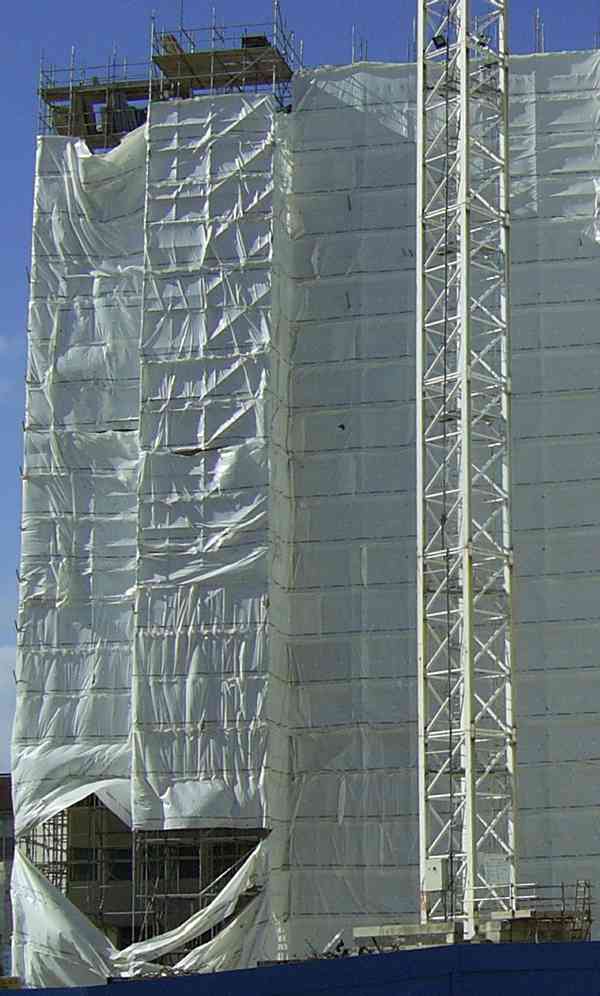 |
| Torn, worn and flapping fabric
|
The result is fabrics that flap, rip and tear, rapidly wear
out and generally fail to do the jobs they were intended to
do.
Flapping fabrics make a lot of noise. This fills the heads
of workers with noise and irritates the neighbours.
Also flapping and torn fabrics look ugly. They make a poor
advertisement for the company doing the work - and can
contribute to giving a site a poor reputation before
construction has been completed.
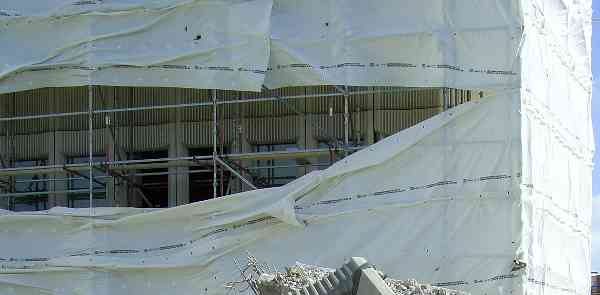 |
| A major tear
|
 |
| Another major tear
|
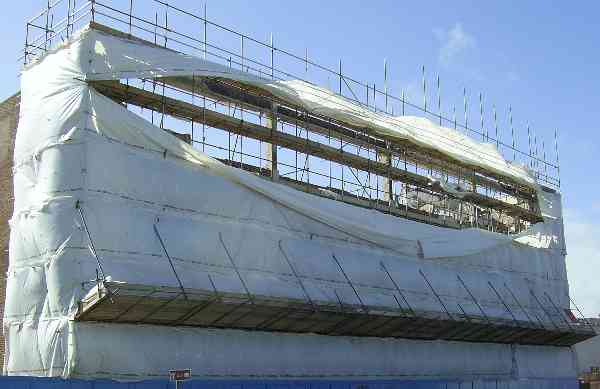 |
| Ripped
|
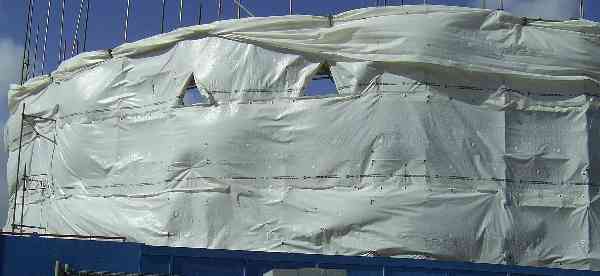 |
| Small tears
|
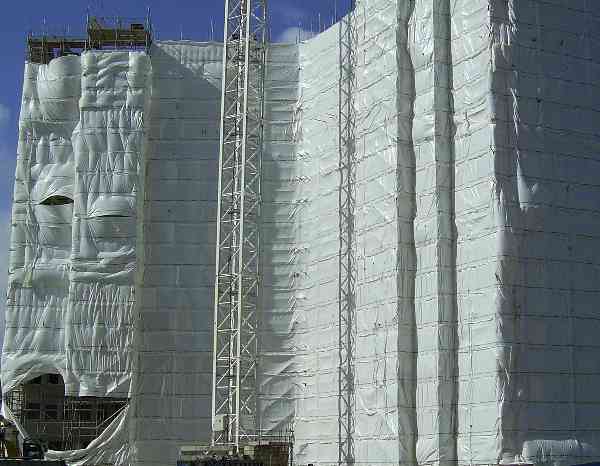 |
| After stepping back a bit
|
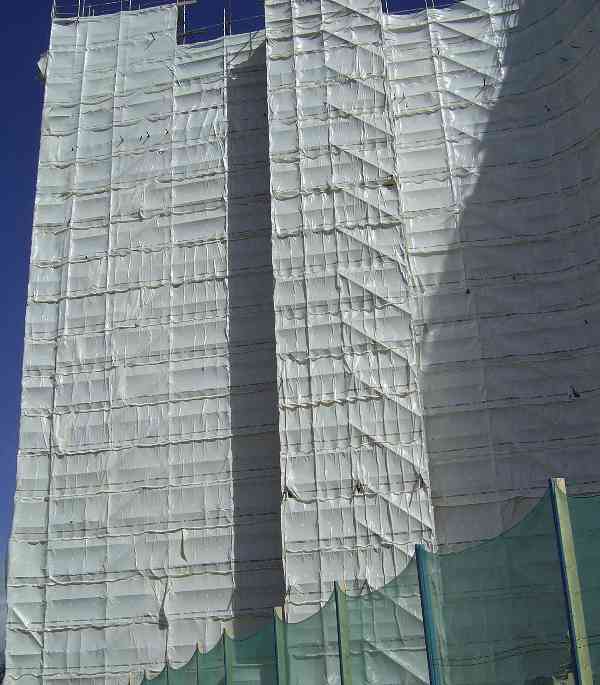 |
| Skeleton on display
|
Pleating
As far as I can see, these buildings should all have been
pleated.
Pleating scaffolded constructions is about as simple as it
can get. Scaffolding typically provides a flat surface with
convenient attachment points.
Ridge cables are run over wheels attached around the
scaffolding poles.
Pleating stabilises the fabric at regular intervals - and
prevents it from flapping around.
There is much less need to puncture the fabric with cable
ties and the like. Valley cables are still likely to need
to penetrate the fabric, but much less frequently than with
practically any other attachment method.
Pleating insulates the fabric from the underlying
scaffolding. The resulting pleated membrane is supported
practically everywhere slightly off the surface by wires -
and is less likely to be torn by irregularities in the
surface caused by things like scaffold end tubes.
Pleated buildings tend to look beautiful and neat - compared
to some of the buildings pictured here. It is a better
advertisement for a construction company to have the sites
they are working on looking neat and tidy.
Cost
Neither the cables nor the scaffolding wheels are free of
charge - but these components are easy to recycle - and can
be expected to last for some time.
The labour cost of performing the pleating is very low.
Horizontal or vertical?
Horizontal pleating has the potential to make a better seal
at the floors, is likely to present less wind resistance and
is more convenient for a single individual to apply. These
attributes tend to make it the preferred pleating type for
this application in most cases.
Vertical pleating doesn't suffer from sagging cables - and
the scaffolding wheels don't work themselves down the
vertical poles. It also tends to make the building look
taller and narrower.
|